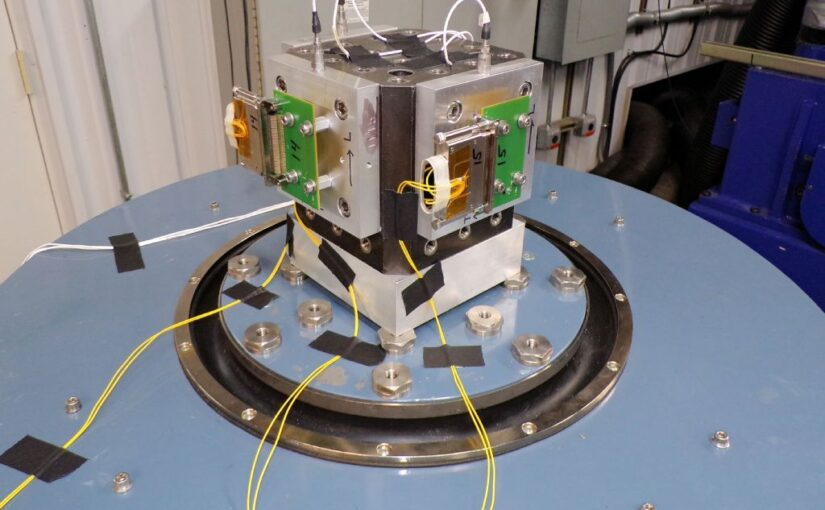Electrical connectors are ubiquitous components in the world of electronics, serving as the vital links that enable seamless communication and power transmission within electronic systems. In today’s rapidly advancing technological landscape, ensuring the integrity and reliability of electrical connectors is of paramount importance. Some are exposed to harsh vibration environments such as automotive, aerospace, military, missiles, and rockets.
A failure or intermittent connection can cause a fault, malfunction, or a system shutdown in a complicated electronic system. These demanding applications leave no room for error, as even a minor fault or intermittent connection can lead to catastrophic consequences, including system failures, malfunctions, or complete shutdowns. Electrical connector testing includes shock testing, mechanical load testing, and vibration testing, among others.
In this article, we will review the methodologies and standards for effective electrical connector testing in vibrating environments.
Mixed Mode, Random and Sinusoidal Vibration Testing of Electrical Connectors
Electrical connector vibration tests mimic real-world scenarios. Understanding how connectors perform under these complex conditions is crucial for designing robust systems.
How is Electrical Connector Vibration Testing performed?
The specific tests performed on electrical connectors include random, mixed mode, and sinusoidal vibration testing. (See below for links to other blog articles that explain more about the types of vibrations.) The test equipment consists of an electrodynamic shaker that has an armature or head which produces the required excitations. A computerized controller sends the precise vibration signals to an amplifier which boosts the signals to drive the shaker head.
Accelerometers are used to measure the test vibrations and to provide feedback to the controller. The connectors are mounted to a rigid test fixture that is attached to the armature, a slip table or head expander. Proper test fixture design is important so that resonances do not occur. Also, proper mounting of the connectors is important to ensure they are supported sufficiently, and that relative motion does not occur due to poor mounting.
The vibration test is run at specified frequencies, amplitudes, durations according to the chosen military, automotive, aerospace, etc. specifications. During the test, the connectors are monitored for discontinuities using an event detector that can monitor discontinuities as quickly as 0.1 microseconds. After testing is completed, the connectors are inspected for wear and failures.
DES will promptly deliver a detailed test report that includes the customer’s name and address, the test dates, a summary of the test procedure, equipment & measuring system calibration information, operational test data, test observations & results, color pictures of the vibration test setup and color pictures of any failures.
Why Perform Electrical Connector Vibration Testing?
The reasons behind subjecting electrical connectors to such rigorous testing are multifaceted. As mentioned above, it helps in identifying potential issues that could lead to field failures and in the development of connectors that can maintain performance in challenging settings. More specific reasons include the following:
- Evaluating Performance and Reliability: Vibration testing assesses how well electrical connectors perform and maintain their reliability in diverse vibration environments.
- Detecting Discontinuities: The testing procedure aims to identify if electrical discontinuities occur when connectors are subjected to typical usage vibrations.
- Preventing Field Failures: By simulating real-world conditions, it aids in the prevention of field failures caused by issues like fretting fatigue, plating wear, cracks, broken wires, intermittent discontinuities, or loose components.
- Developing Robust Connectors: Vibration testing is instrumental in the development of stronger and more robust connectors suitable for demanding applications in sectors such as automotive, military, and space industries.
EIA-364-28 and other Electrical Contractor Vibration Test Standards
Adherence to industry standards is paramount when performing electrical connector testing in vibration environments. These standards provide comprehensive guidelines and procedures for conducting rigorous testing. They emanate from a variety of organizations such as the EIA-364-28 standard from the Electronics Industries Alliance. Here are some of the prominent standards employed in the evaluation of electrical connectors’ vibrational resilience:
- EIA-364-28 – Vibration Test Procedure for Electrical Connectors and Sockets
- GMW 3191 – Automotive Connector Test and Validation Specification
- MIL-STD-1344A, Method 2005 – Military Standard, Test Methods for Electrical Connectors
- SAE USCAR-2 – Performance Specification for Automotive Electrical Connector Systems
Precision-Driven Electrical Connector Testing
If you want to learn more about vibration testing, please read these related blog articles:
- Sinusoidal and Random Vibration Testing Primer
- Mixed Mode: Sine on Random Vibration Testing
- High G Level Random Vibration Test
- Extreme Combined Temperature & Vibration Testing
DES has the experience and equipment to perform accurate, repeatable testing of electrical connectors in our controlled, world class accredited lab. We excel at designing and making customized setups and fixtures. Contact DES today to discuss your electrical connector vibration testing requirements.
